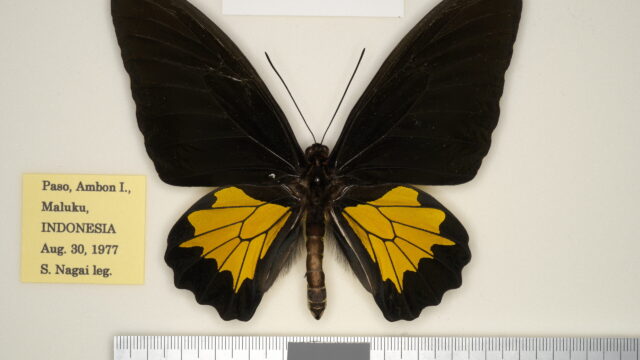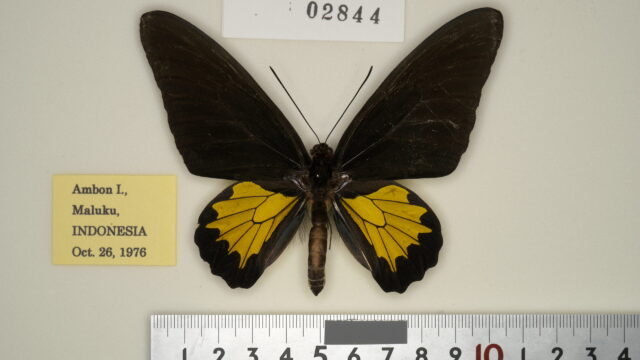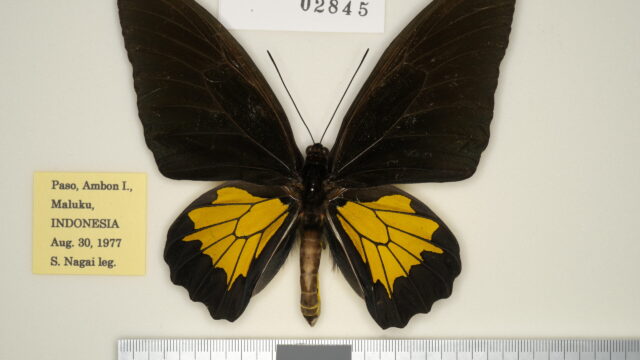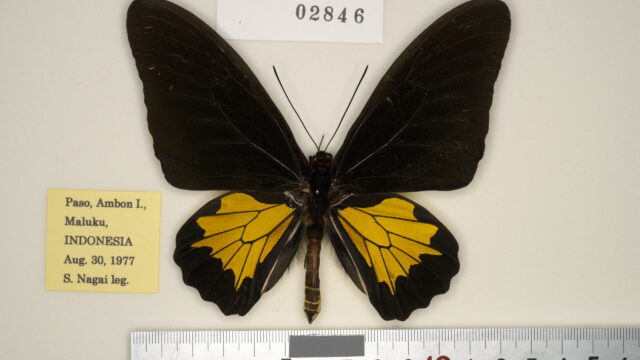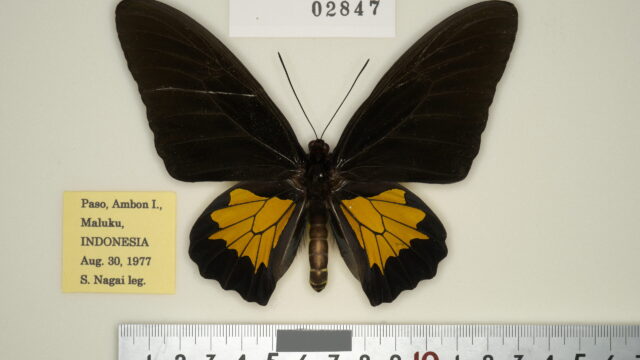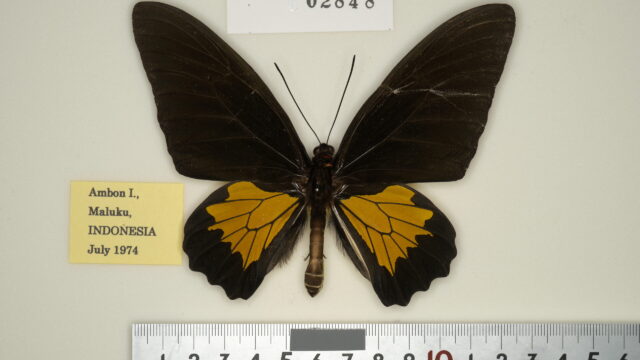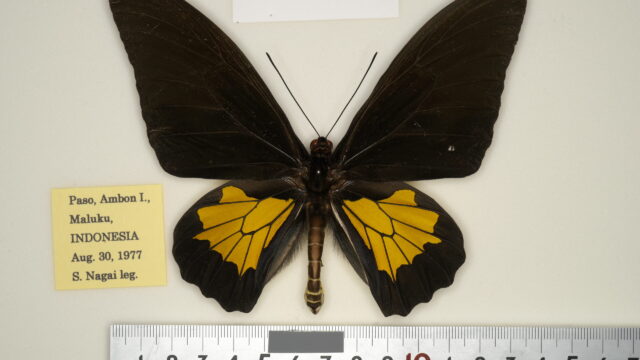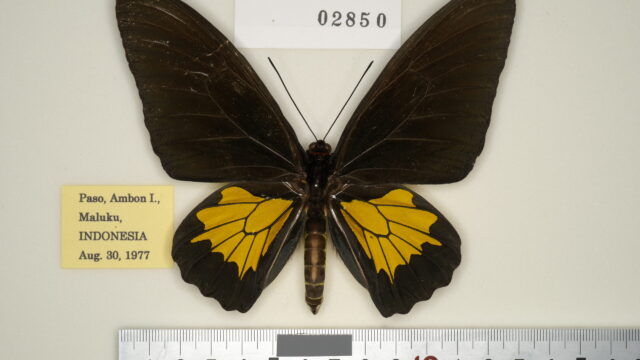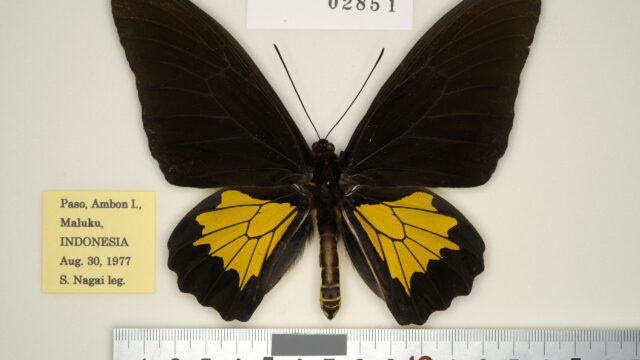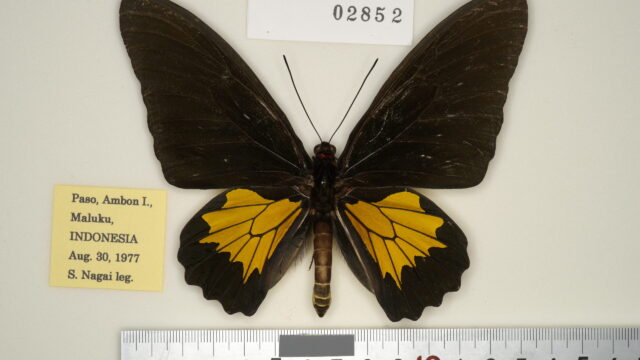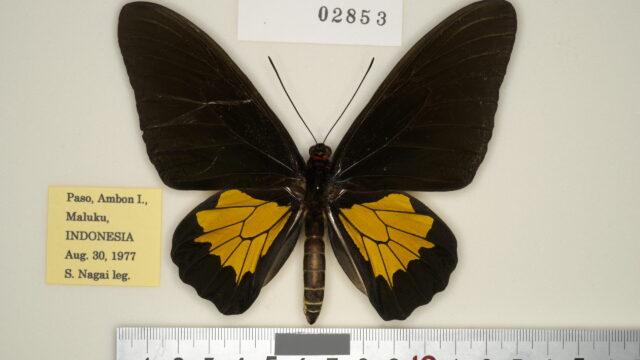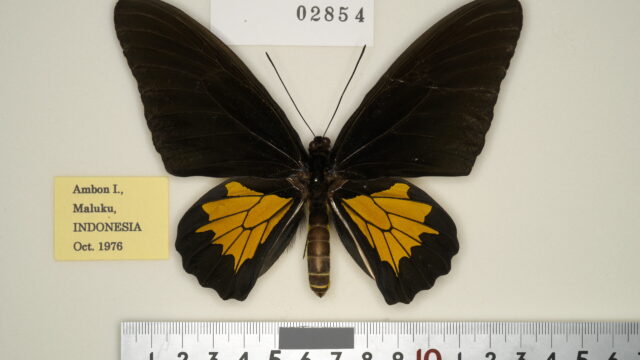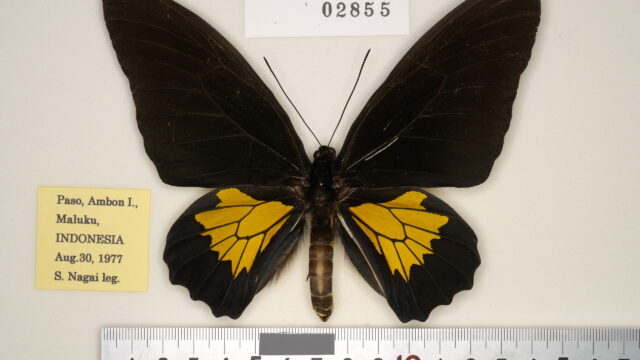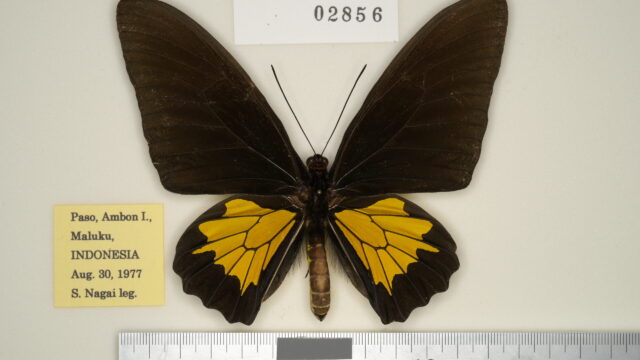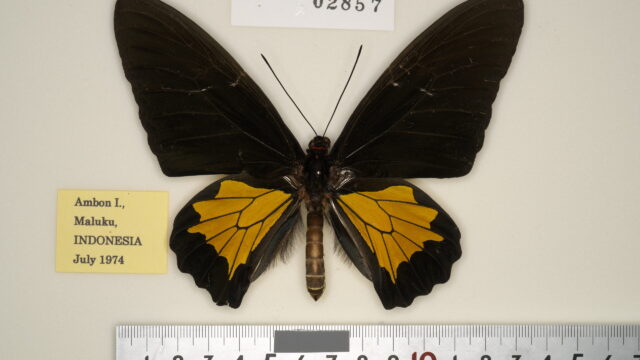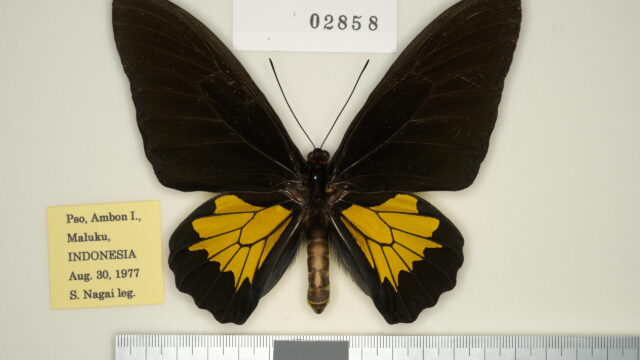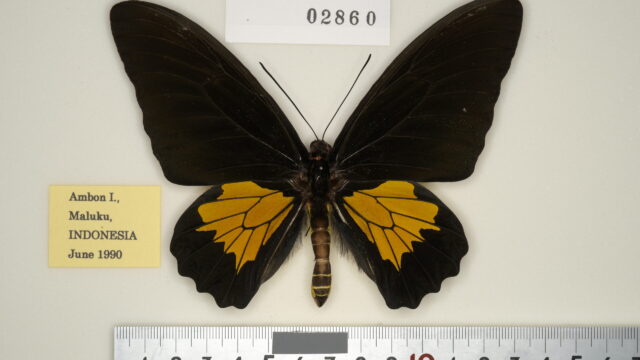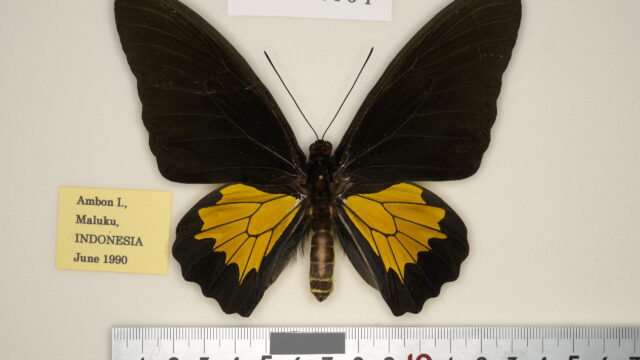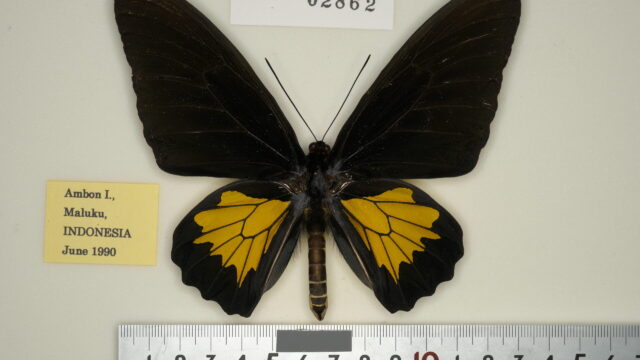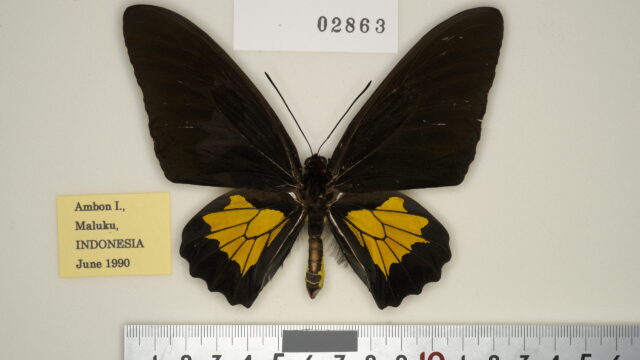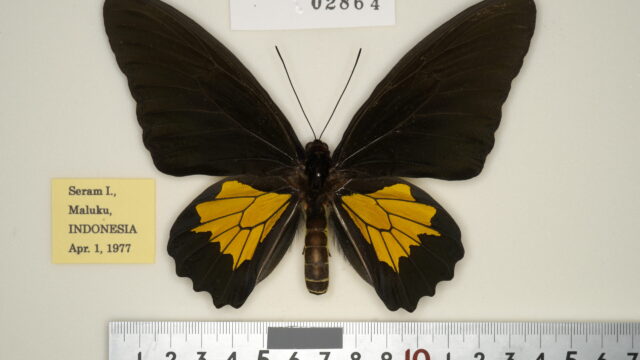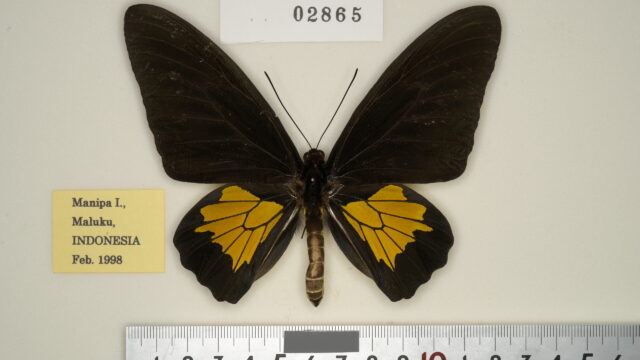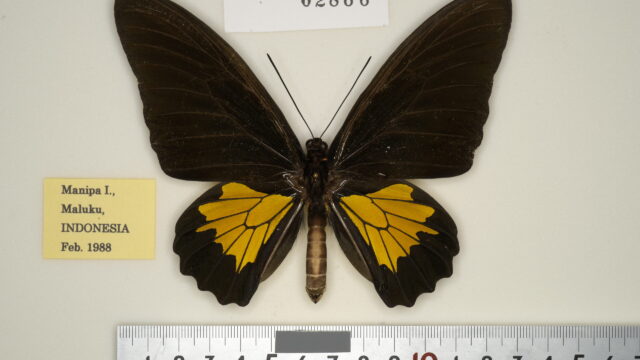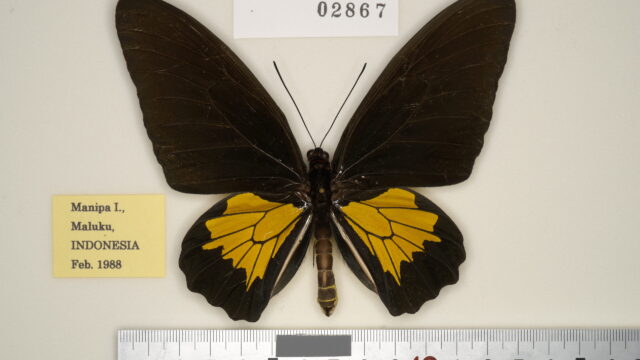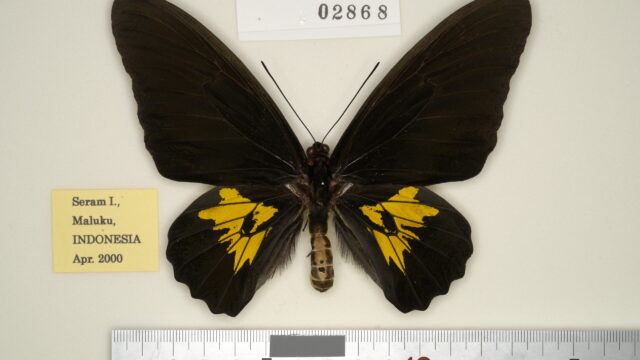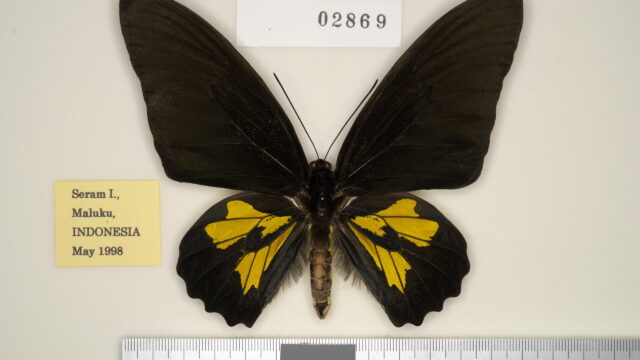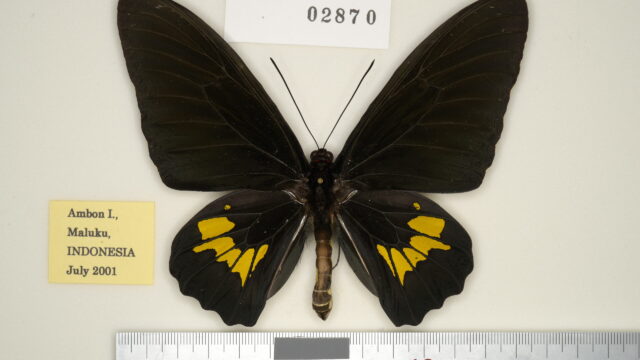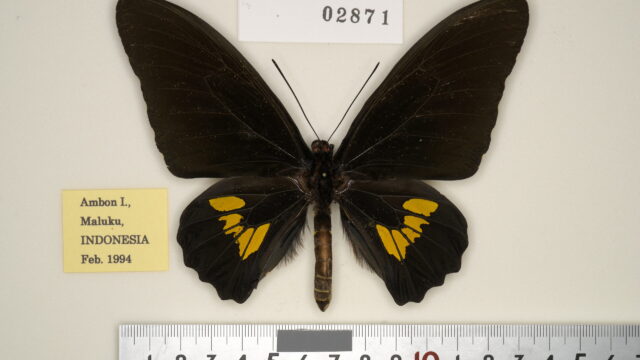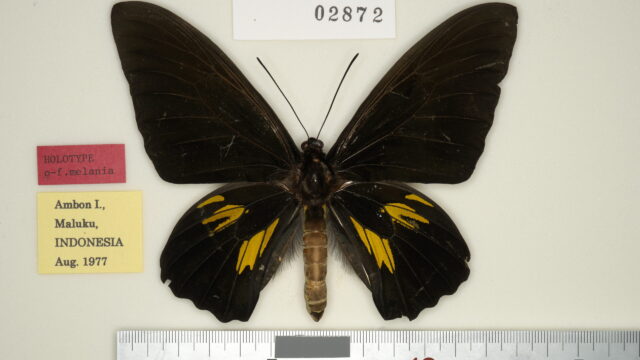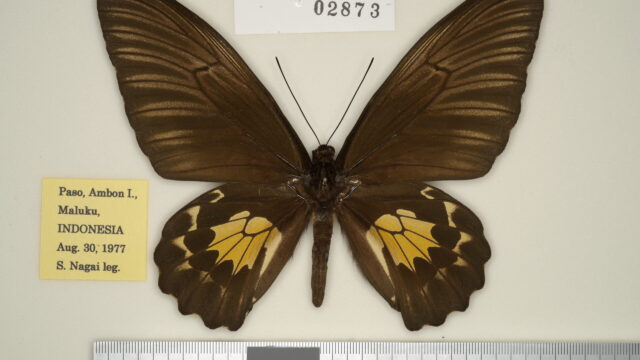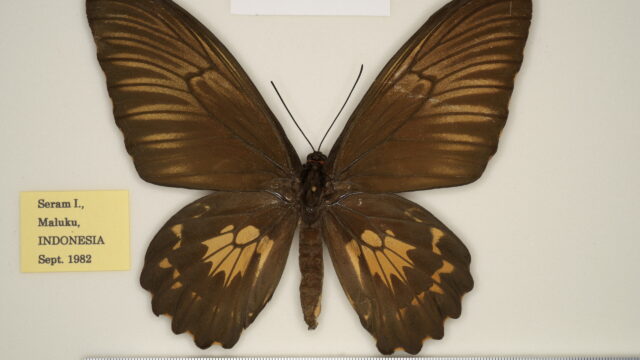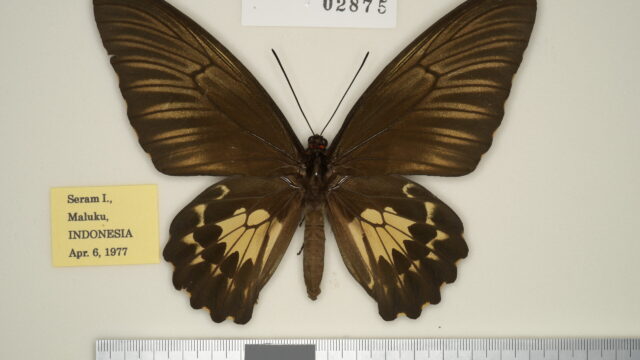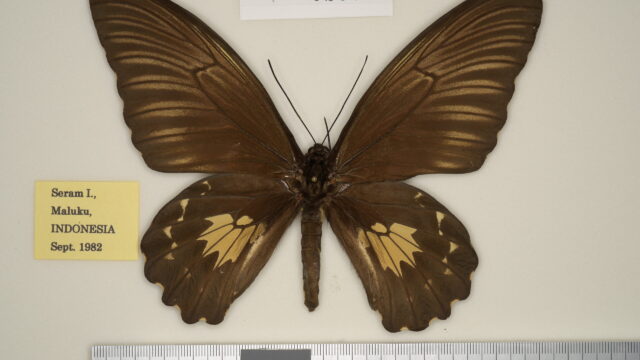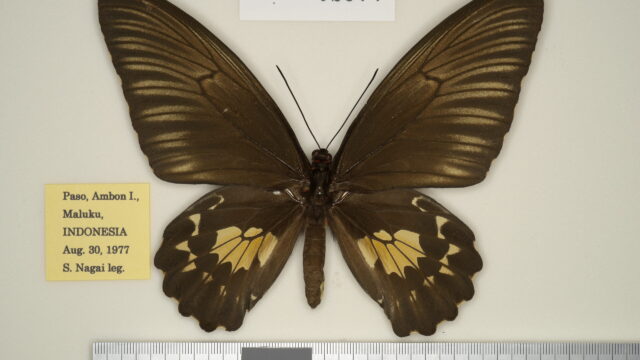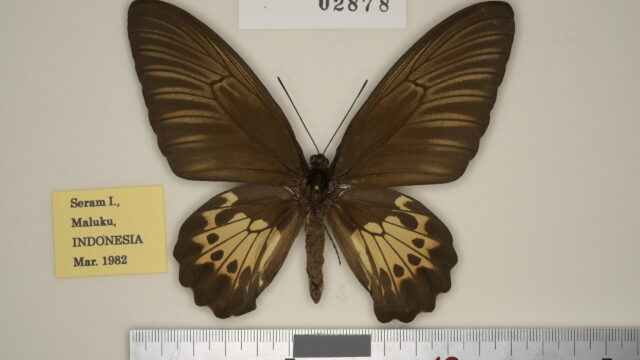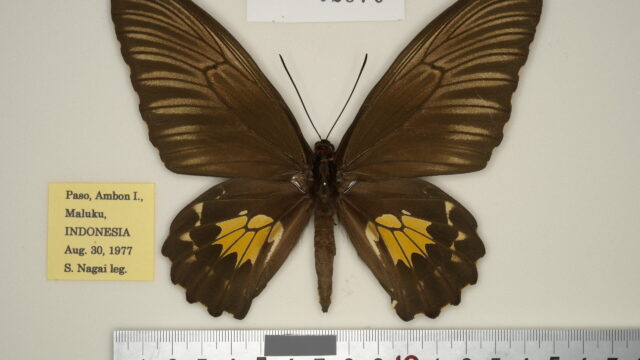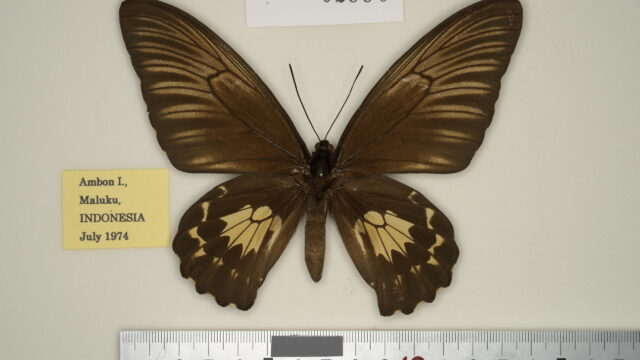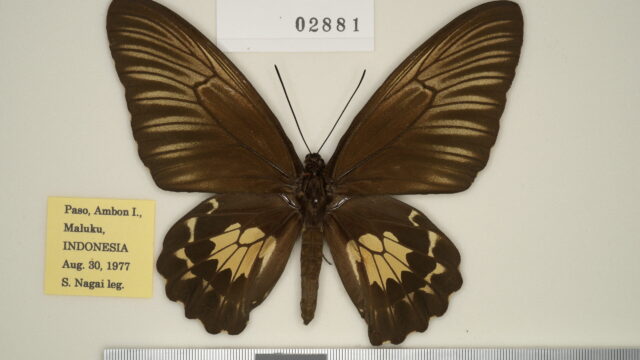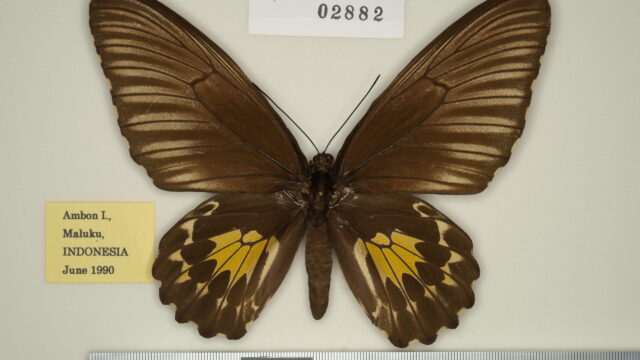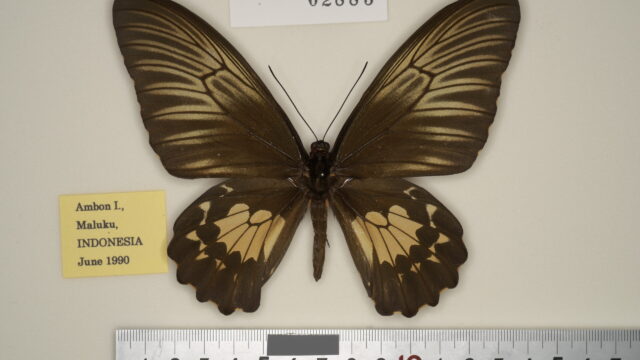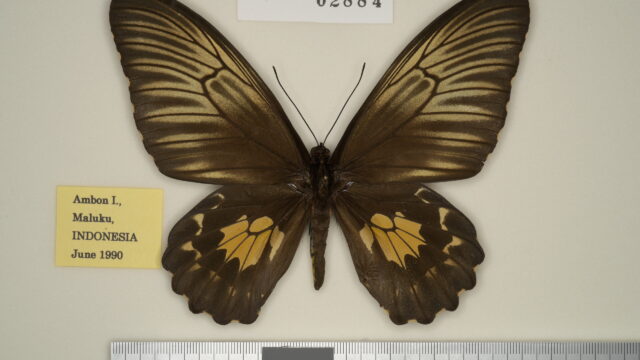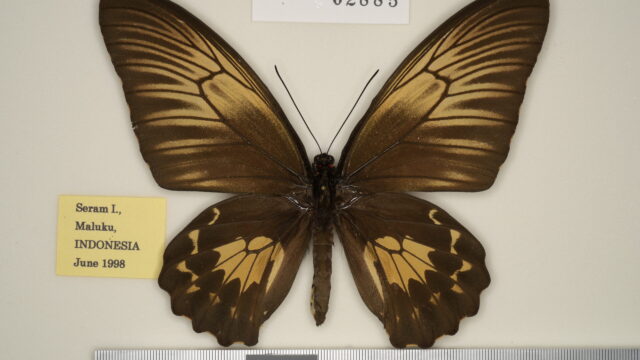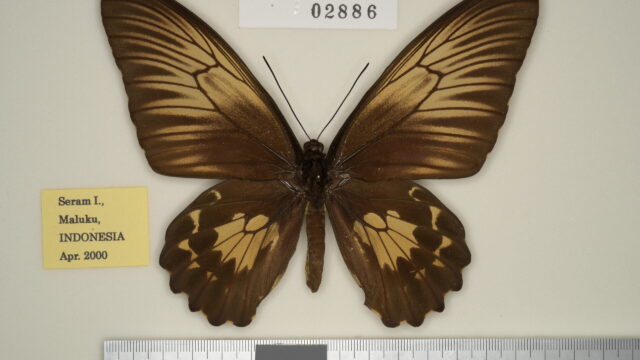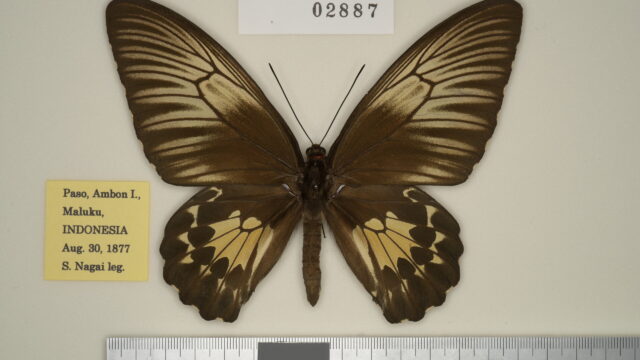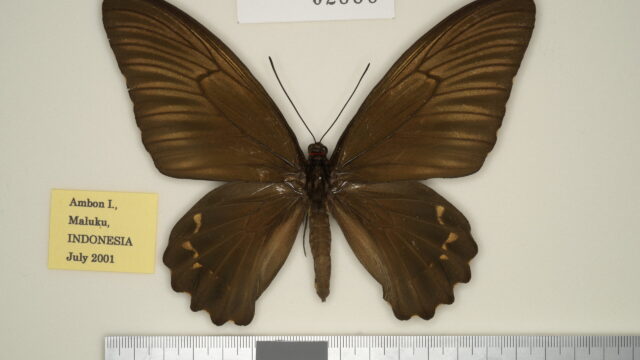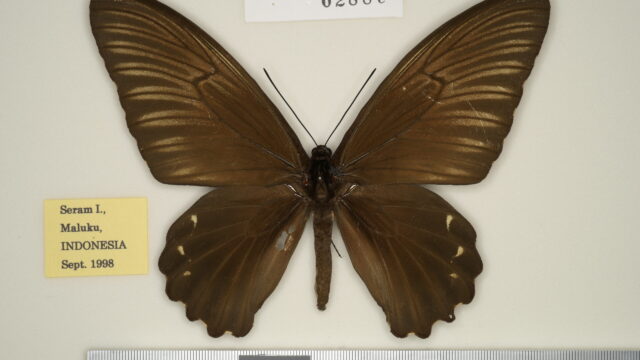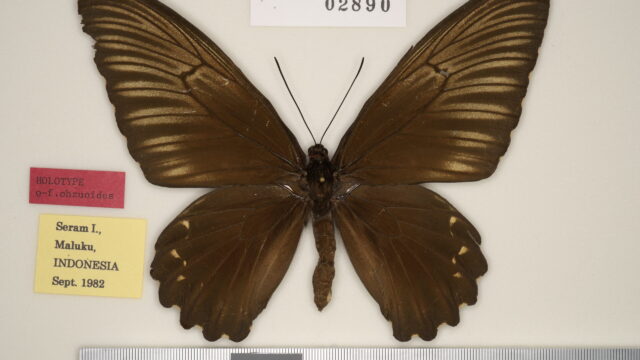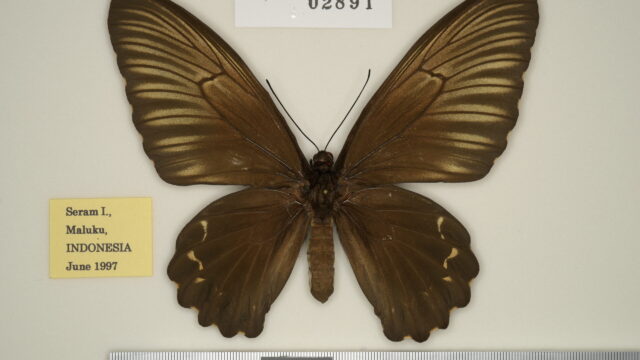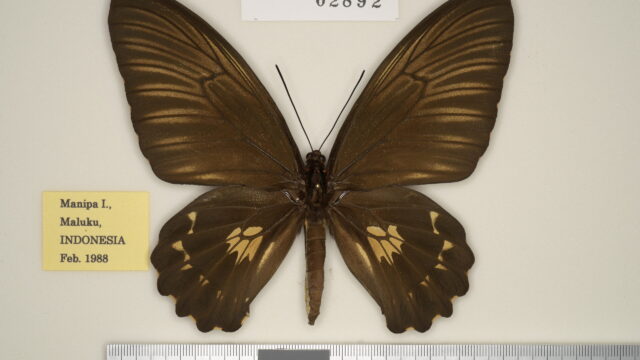- Ssp. oblongomculatus (Goeze, 1779)12) [♀] [♂: helena, (Clerck, 1764)2)(♀: 2 forms)
=helena, (Clerck, 1764)2) (nec Linnaeus, 175818)) [♂] (type loc.?)
=amphimedon (Cramer, 1779)3) [♀] (Ambon Is.)
=asartia Rothschild, 190827) [♂] (Seramlaut Is.)
=osiris Ehrmann, 19257) [♂] (Ceram Is.)
=cyclop Rumbucher & Schäffler, 200529) [♂, ♀] (Manipa Is.)
(Distribution) [Map 140]
INDONESIA [Maluku] Manipa Is., Kelang Is., Boano Is., Seram Is. (Piru, Kamarian, Amahai, Wahai, Yaputih, Manusela), Ambon Is., Haruku Is., Saparua Is., Nusa Laut Is., Geser Is., Seramlaut Is., Misool Is.
(Episodes of discovery and original description)
This subspecies was first described by Clerck (1764) as T. helena. Later, Goeze (1779) described it as an independent species, oblongomaculatus, based on the ♀ of Seba (1765), and Cramer in the same year named it amphimedon, based on the same ♀. As for the priority issue, Goeze wrote in his preface “on the occasion of the Michaelmas Day (29 September) in 1779”, which means that he named the species before that date. On the other hand, Goeze’s citation of the first illustration (no. 193) in Cramer’s large book “Papillon Exotique”, vol. 3, 1779) suggests that Cramer had already named it before Goeze did. However, since Goeze’s date of publication is considered to have been earlier, the priority right lies with Goeze. Note that oblongomaculatus means “with rectangular spots”.
(Characteristics)
One of the oldest known subspecies of Birdwing Butterflies. Populations belonging to this subspecies are large, especially those from Seram and Ambon Islands, which are the largest in genus Troides.
(Spotted pattern)
♂: FW is black, glossy on both sides. The semi-translucent golden patch on HW, especially the subcostal spot, is the largest of the subspecies and this is an important distinguishing feature. The subcostal spot extends toward V8th and reaches it. The cell-spot is also very extensive and spread out almost entirely, and in space 5, there is a finger-like projection along V6th.
♀: There are two forms. The color of HW pale band is grayish-yellow or milky white and generally reduced and whiten further on the underside. The dark discal spots are large, fused together and moreover fused with broad dark marginal border.
- Dark form (♀-f. amaura (Jordan, 1908)16)): FW without vein-stripes.
- Light form (♀-f. oblongomaculatus (Goeze, 1779)12)): FW with vein-stripes.
(Variation)
♂-f. linos Haugum & Low, 198213): [Aberrant HW pattern] A large black elliptical and irregular patch is present within the subcostal space and a smaller one in the next.
♂-f. nigropuncta Rumbucher & Schäffler, 200529): [Aberrant HW pattern] HW with black spot in apex of cell as well as with faintly sketched discal spots that are connected to the marginal border in spaces 4 and 5.
♂-f. melania Ohya, 1983 23): [Aberrant HW pattern] The cell-spot and spot in space 4 are completely absent, those in spaces 3 – 5 linear, and that in space 6 V-shaped, and subcostal spot is bisected into upper and lower sections in the center.
♂-f. rusty Rumbucher & Schäffler, 200529): [HW discoloration] The color of golden patches is orange instead of yellow.
♂-f. rubescini Rumbucher & Schäffler, 200529): [HW discoloration] The color of golden patches is partially red.
♀-f. olympicuss Rumbucher & Schäffler, 200529): [Aberrant FW pattern] The extreme form of light form.
♀-f. melanides Rumbucher & Schäffler, 200529): [Aberrant HW pattern] HW pale band is extremely reduced.
♀-f. ohzuoides Ohya, 198323): [Aberrant HW pattern] Totally absence of HW pale spots except for a row of minute submarginal spots. Same aberration of ssp. bouruensis ♀-f. ohzui.
♀-f. goezei (Dufrane, 1930)6): [HW discoloration] The color of spots on HW is creamy instead of yellow.
